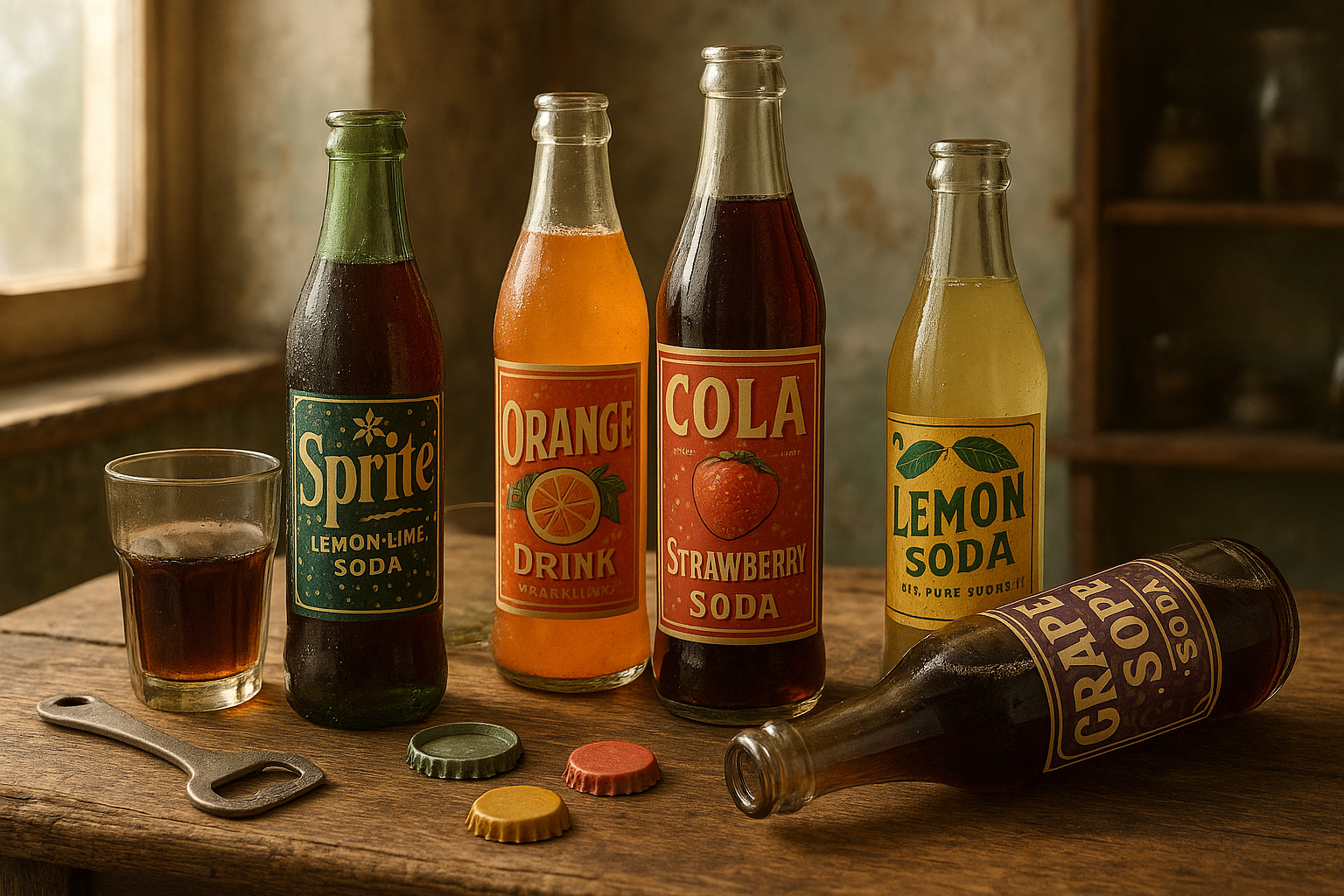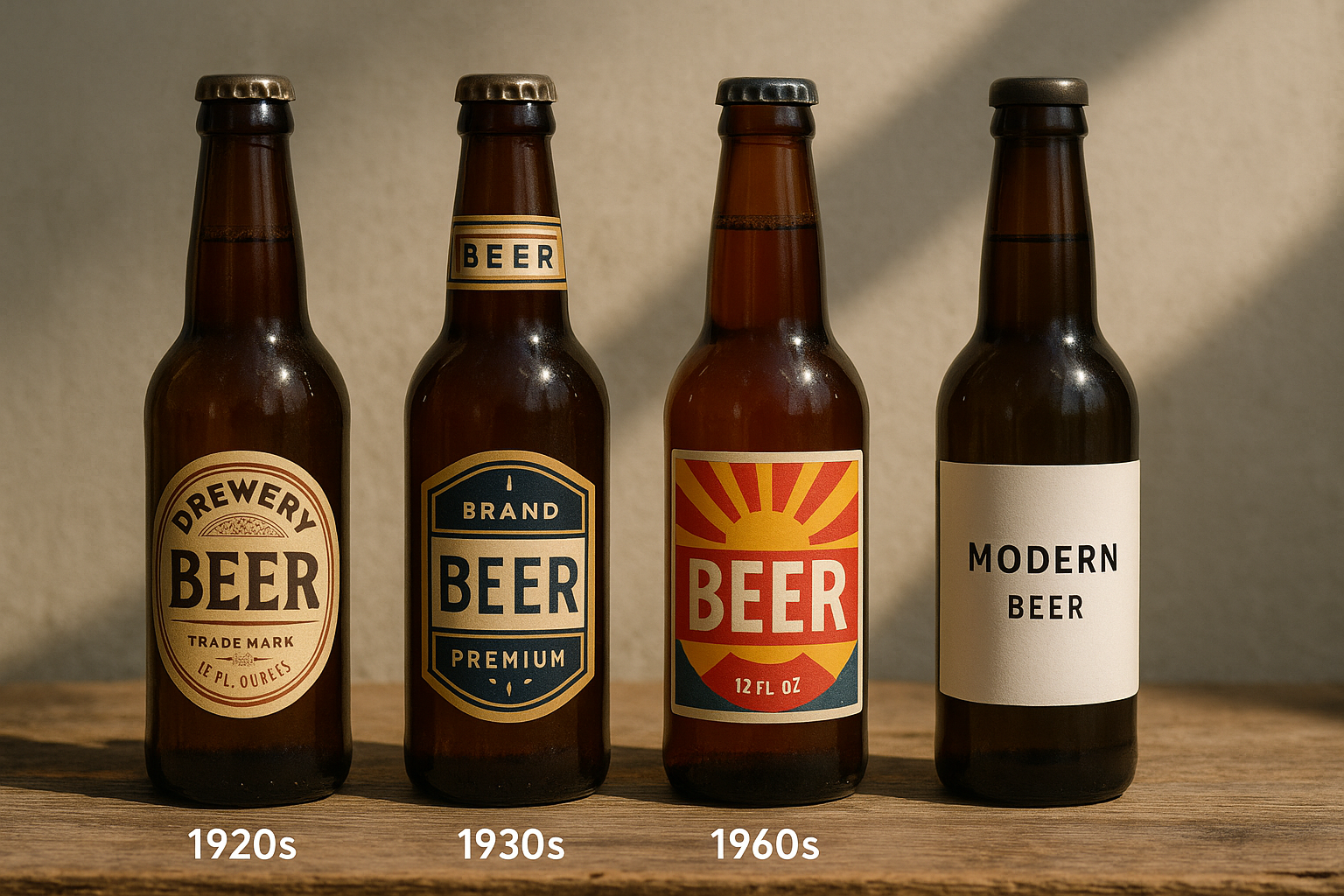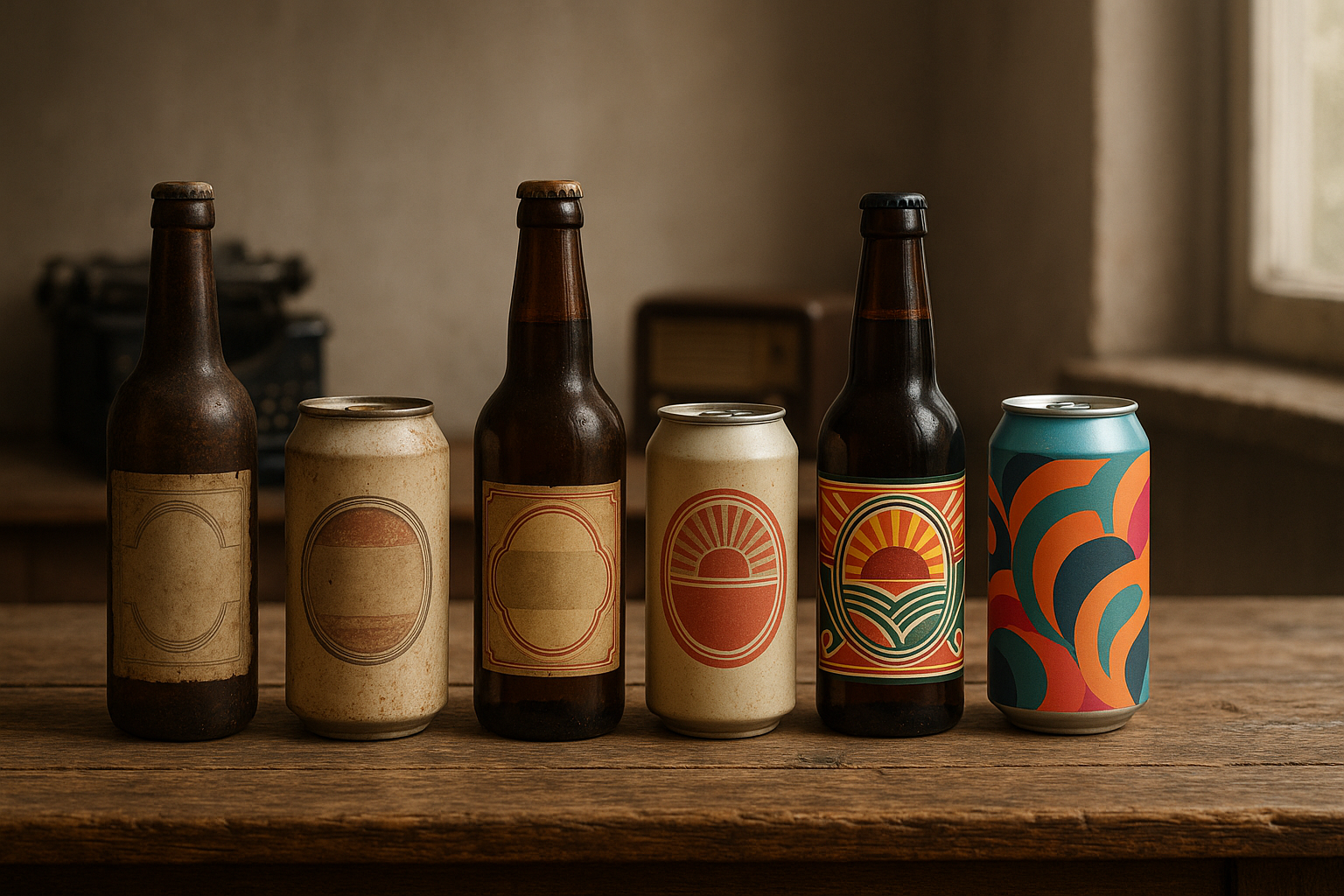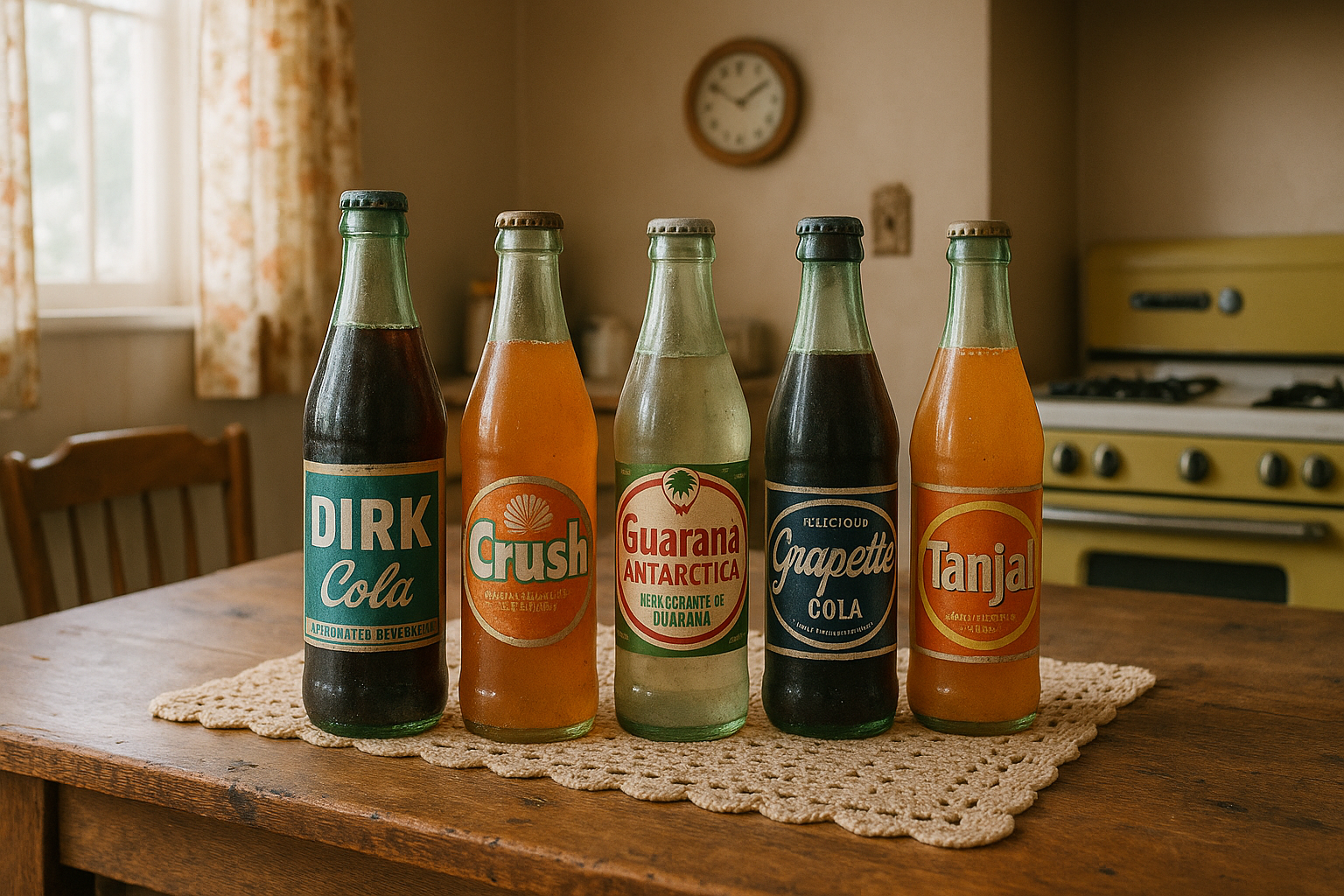In the world of iconic brands, few names resonate as deeply as Coca-Cola. This effervescent beverage has become a staple in global culture, transcending geographical boundaries and generations. But have you ever paused to consider the humble beginnings of this legendary drink? Behind every sip lies a rich tapestry of history, innovation, and creativity, all starting with its early designs. Join us on a captivating journey as we delve into the origins and evolution of Coca-Cola’s early designs—a tale as refreshing as the beverage itself. 🥤
Our story begins in the late 19th century, a period of rapid industrialization and burgeoning consumer culture. It was during this era that a curious concoction was born in an Atlanta pharmacy, destined to become a household name. The original Coca-Cola, created by Dr. John Stith Pemberton, was a syrupy mix of coca leaves and kola nuts, intended as a medicinal tonic. But beyond its initial formula, what truly set Coca-Cola apart was its visionary marketing and design. The very first logo, designed by Pemberton’s partner Frank M. Robinson, was a simple yet elegant script that would become one of the most recognizable trademarks in the world.
As we explore the transformation of Coca-Cola’s designs, we’ll uncover how each iteration reflected the zeitgeist of its time. From the ornate Victorian script of the 1880s to the streamlined Art Deco influences of the early 20th century, Coca-Cola’s branding was always at the forefront of design trends. This adaptability was key to its enduring appeal, allowing the brand to resonate with diverse audiences across different eras. We’ll take a closer look at how these changes not only represented shifts in artistic styles but also mirrored societal changes and the evolving consumer landscape.
In our comprehensive exploration, we’ll also highlight the role of packaging in shaping Coca-Cola’s identity. The iconic contour bottle, introduced in 1915, is a prime example of design innovation. Originally conceived to distinguish Coca-Cola from its imitators, this curvaceous silhouette became an enduring symbol of authenticity and quality. We’ll examine how the bottle’s design has evolved over the years, from subtle tweaks to major redesigns, and how it continues to captivate consumers even today. The evolution of the Coca-Cola bottle serves as a testament to the power of design in reinforcing brand identity and consumer loyalty.
Finally, we’ll delve into the cultural impact of Coca-Cola’s early designs, examining how they have influenced art, advertising, and popular culture. From Andy Warhol’s iconic pop art interpretations to the brand’s presence in classic films, Coca-Cola’s imagery has permeated our collective consciousness. We’ll explore the symbiotic relationship between the brand and culture, and how Coca-Cola has not only adapted to but also shaped cultural trends over the decades.
As we peel back the layers of Coca-Cola’s early designs, you’ll gain a newfound appreciation for the artistry and strategy behind this global icon. Whether you’re a design aficionado, a history buff, or simply a fan of the fizzy drink, there’s something in this story for everyone. So grab a cold Coke, sit back, and join us on this effervescent exploration of one of the world’s most beloved brands. 🥳
The Birth of Coca-Cola: A Revolutionary Beverage
The story of Coca-Cola’s origin is as effervescent as the drink itself. It all began in 1886 when Dr. John Stith Pemberton, a pharmacist from Atlanta, Georgia, concocted a caramel-colored liquid and took it to a nearby pharmacy. There, it was combined with carbonated water and sampled by customers who pronounced it “excellent”. Pemberton’s bookkeeper, Frank M. Robinson, is credited with naming the beverage “Coca-Cola” and designing the distinct script that has become an iconic brand emblem. This initial design marked the beginning of Coca-Cola’s journey to becoming a staple in American and global culture.
The formulation of Coca-Cola was an innovative breakthrough during a time when soda fountains were gaining popularity in the United States. Pemberton’s creation was marketed as a tonic for common ailments, containing extracts of coca leaves and kola nuts, which inspired the name Coca-Cola. As the drink’s popularity soared, it became apparent that its potential went beyond medicinal purposes. The secret formula, known today as “Merchandise 7X”, remains one of the world’s best-kept secrets, contributing to the mystique surrounding the brand.
The early success of Coca-Cola can also be attributed to the strategic decisions made by its management. Asa Candler, who acquired the business in 1888, played a pivotal role in transforming Coca-Cola into a household name. Candler’s aggressive marketing tactics, including distributing free drink coupons and promoting the brand with clocks, urns, calendars, and apothecary scales bearing the Coca-Cola logo, effectively embedded the brand into the American consciousness. This marked a significant shift in the beverage industry, setting a precedent for modern marketing practices.
Check out the following video that delves deeper into Coca-Cola’s intriguing history:
The History of Coca-Cola by The Coca-Cola Company
The Evolution of Coca-Cola’s Design: A Chronological Journey
Coca-Cola’s design evolution is a testament to the brand’s ability to adapt and innovate. The original logo, designed by Frank M. Robinson, featured Spencerian script, which was popular during the late 19th century. This elegant script has remained remarkably consistent over the years, contributing to the brand’s enduring appeal. However, while the logo has remained mostly unchanged, the bottle design has undergone significant transformations, each iteration reflecting contemporary design trends and consumer preferences.
In 1915, the company launched a design competition to create a distinctive bottle that would set Coca-Cola apart from its competitors. The winning design, created by the Root Glass Company of Terre Haute, Indiana, was inspired by the curves and grooves of the cocoa pod. This iconic contour bottle, patented in 1915, became synonymous with Coca-Cola and remains one of the most recognized designs in the world. The bottle’s unique shape was not only visually striking but also practical, as it was designed to be easily recognizable, even in the dark.
As Coca-Cola expanded globally, its packaging continued to evolve. During World War II, the company introduced the first-ever cans, allowing troops to enjoy Coca-Cola on the front lines. This innovation set the stage for the introduction of aluminum cans in the 1960s, further diversifying the brand’s packaging options. In recent years, Coca-Cola has embraced sustainability, launching initiatives to reduce its carbon footprint and promote recycling. These efforts have led to the development of PlantBottle™ technology, a fully recyclable PET plastic bottle made partially from plants, underscoring Coca-Cola’s commitment to environmental responsibility.
Explore the design evolution of Coca-Cola through the table below:
| Year | Design Feature | Description |
|---|---|---|
| 1886 | Original Logo | Spencerian script designed by Frank M. Robinson |
| 1915 | Contour Bottle | Iconic design inspired by the cocoa pod |
| 1940s | Introduction of Cans | First cans introduced during WWII for military use |
| 1960s | Aluminum Cans | Adoption of lightweight aluminum packaging |
| 2009 | PlantBottle™ | Innovative recyclable bottle made partially from plants |
Marketing and Branding Strategies: The Coca-Cola Phenomenon
Coca-Cola’s branding strategies have been pivotal to its success, propelling it from a modest medicinal tonic to a global symbol of happiness and refreshment. The brand’s marketing approach has been characterized by a keen understanding of consumer behavior and a commitment to creating an emotional connection with its audience. Coca-Cola’s advertising campaigns have been instrumental in cementing its place in popular culture, often tapping into themes of friendship, joy, and shared moments.
One of the brand’s most iconic marketing strategies was the introduction of the “Share a Coke” campaign, which personalized bottles with popular names. This campaign not only boosted sales but also engaged consumers on a personal level, encouraging them to share their experiences on social media. Such innovative marketing tactics have allowed Coca-Cola to stay relevant in an ever-changing market, continuously appealing to new generations of consumers.
Another cornerstone of Coca-Cola’s branding is its global presence, achieved through strategic partnerships and sponsorships. The company has a longstanding relationship with major sporting events such as the FIFA World Cup and the Olympic Games, which has helped to reinforce its image as a purveyor of happiness and celebration. By associating itself with these global events, Coca-Cola has effectively positioned itself as a brand that transcends cultural and geographical boundaries, uniting people across the world.
- Engage with Coca-Cola’s rich history and marketing strategies by exploring their official website.
- Discover more about the brand’s commitment to sustainability and innovation.
- Join the conversation on social media and share your Coca-Cola moments with the hashtag #ShareACoke.
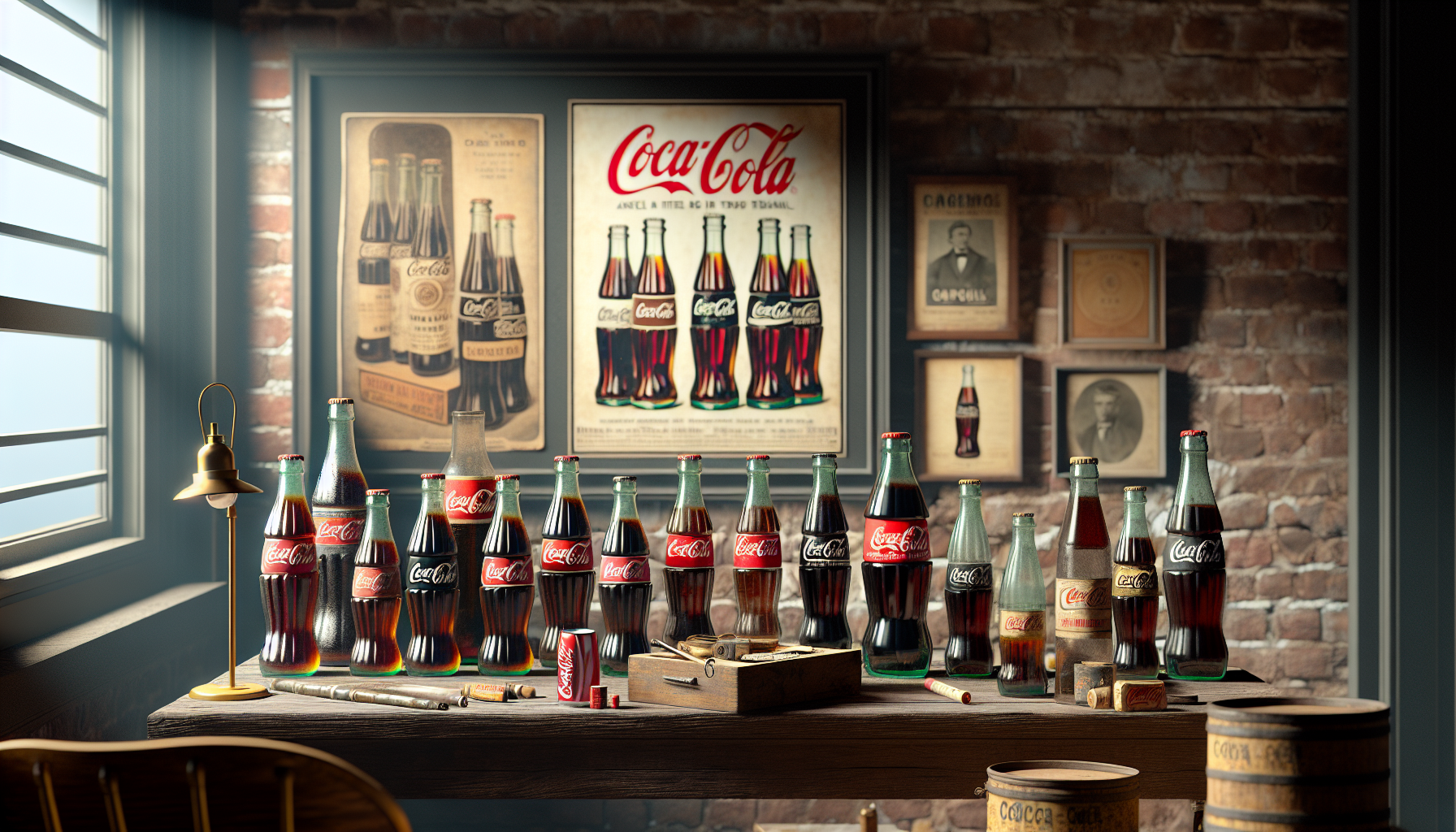
Conclusion
Conclusion: Uncovering the Origins: The Fascinating Evolution of Coca-Cola’s Early Designs
The journey through the origins and evolution of Coca-Cola’s early designs is more than just a stroll down memory lane—it’s an exploration into how a simple beverage transformed into a cultural icon recognized worldwide. This exploration has shown us the powerful role that branding, design, and marketing play in the success of a product.
Recap of Key Points
First, we delved into the humble beginnings of Coca-Cola, tracing back to its creation by Dr. John S. Pemberton in the late 19th century. The story of Coca-Cola starts in a small pharmacy in Atlanta, where it was initially conceived as a medicinal tonic. This early history is pivotal, as it sets the stage for the brand’s transformation from a local curiosity to a global powerhouse.
Next, we examined the evolution of Coca-Cola’s logo and packaging. The distinctive Spencerian script logo, designed by Frank Mason Robinson, has undergone several refinements yet retains its timeless appeal. This section highlighted how consistent branding can foster brand loyalty and recognition—a crucial lesson for businesses in any sector.
Further, we explored the introduction and impact of the contour bottle, which became a defining feature of Coca-Cola’s identity. Designed in 1915, the contour bottle was a game-changer in product differentiation, underscoring the importance of design innovation in maintaining competitive advantage. This lesson emphasizes that sometimes, how a product is presented can be as important as the product itself.
The discussion also ventured into the strategic marketing campaigns that played a vital role in embedding Coca-Cola into popular culture. From festive advertisements to associations with happiness and refreshment, Coca-Cola’s marketing strategies were pioneers in creating emotional connections with consumers. This underscores the importance of storytelling and emotional branding in today’s market.
The Importance of Understanding Coca-Cola’s Evolution
Understanding the fascinating evolution of Coca-Cola’s early designs offers invaluable insights into the world of branding and marketing. For entrepreneurs, marketers, and designers, Coca-Cola’s story is a testament to the enduring power of strategic innovation and consistent branding. It highlights the critical role that understanding consumer behavior and cultural trends plays in creating a brand that resonates across generations and borders.
Moreover, this exploration is a reminder of the broader implications of branding beyond mere aesthetics. It delves into how brands can influence societal norms, shape consumer habits, and become symbols of broader cultural movements. The Coca-Cola story is not just about a beverage; it’s about a legacy of ingenuity and cultural impact.
Inspiration and Call to Action
As you reflect on the fascinating journey of Coca-Cola’s design evolution, consider how the principles that guided its success can be applied in your own ventures or professional practices. Whether you’re crafting a brand from scratch or reinventing an existing one, remember that innovation, consistency, and emotional connection are the pillars of effective branding.
We encourage you to share your thoughts and experiences related to branding and design in the comments section below. Your insights can contribute to a richer understanding of this topic and inspire others in their branding journeys. Additionally, if you found this article insightful, please share it with your network to spread these valuable lessons.
The evolution of Coca-Cola’s designs teaches us that every brand has a story waiting to be told. Let’s continue to explore, innovate, and connect through the power of design and storytelling. 🌟
For further reading on branding strategies and design evolution, consider exploring these active resources:
– The Coca-Cola Company: Our History
–
By understanding and appreciating the past, we can craft a future where brands continue to enrich our lives with creativity and purpose.
Toni Santos is a visual poet and botanical dreamweaver, archiving the ephemeral beauty of dreams through nature’s delicate language.
In his artistic universe, every petal, vine, and root becomes a memory—an echo from the subconscious—preserved in time like pages from an ethereal journal. Toni treats plants not just as living beings, but as dream-symbols: vessels of forgotten feelings, silent wishes, and secret stories waiting to unfold.
His work is rooted in the belief that nature holds the vocabulary of dreams. Through botanical compositions, symbolic floral creations, and enchanted visual studies, he gives form to the unseen — the moment between sleep and wakefulness, where memory fades and imagination begins.
As the visionary behind Vizovex, Toni curates collections that feel like fragments of a dreamscape: moss-filled glass jars, mythic flowers, ancient botanical symbols reimagined. These creations invite you to explore your inner worlds and reawaken your sense of wonder.
His work is a tribute to:
The dreamlike language of plants and natural symbols.
The quiet messages found in forgotten moments.
The art of recording the soul’s memories in organic form.
Whether you’re a seeker of meaning, a lover of myth, or someone who drifts between the symbolic and the real, Toni welcomes you to explore an archive of dreams — one petal, one relic, one timeless whisper at a time


